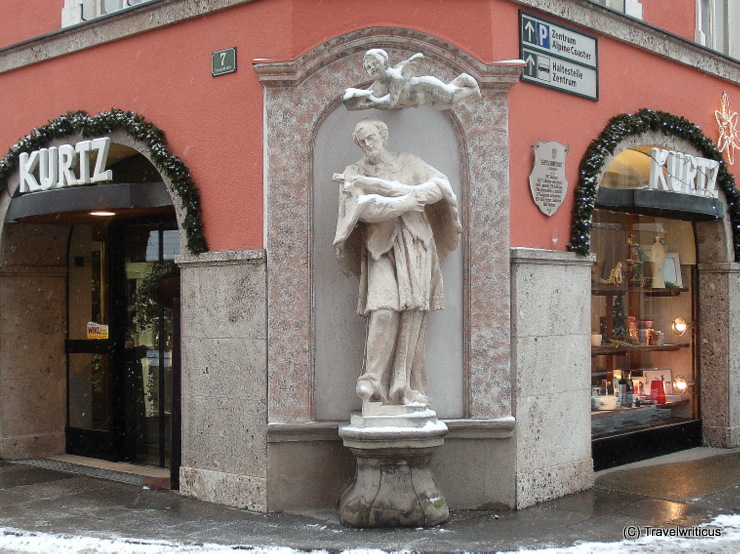
This statue of Saint John of Nepomuk stands at a building named Ehemschiedhaus. The building dates back to the 13th century. The sculpture saw its completion in the first half of the 18th century. I love the levitating angel above his head.
You only see what you know (Goethe)

This statue of Saint John of Nepomuk stands at a building named Ehemschiedhaus. The building dates back to the 13th century. The sculpture saw its completion in the first half of the 18th century. I love the levitating angel above his head.
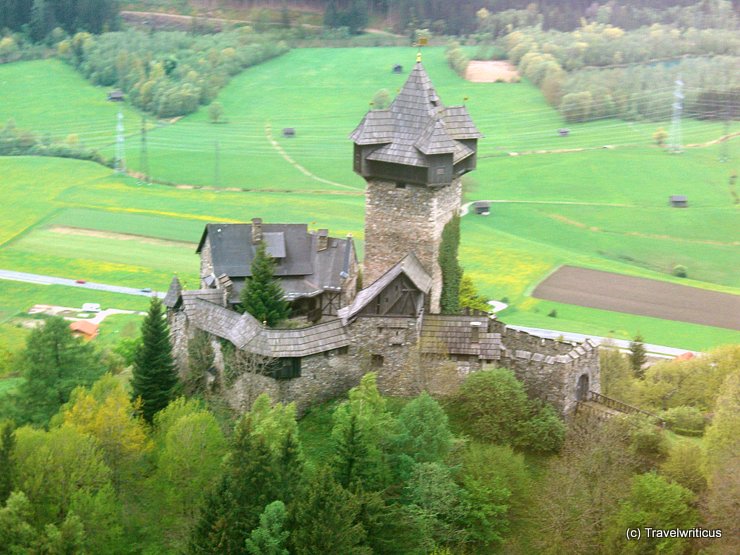
Niederfalkenstein Castle (Burg Niederfalkenstein) stands high over the municipality Obervellach in the Austrian state of Carinthia. This photo was taken from a train while passing the railway bridge Falkensteinbrücke.
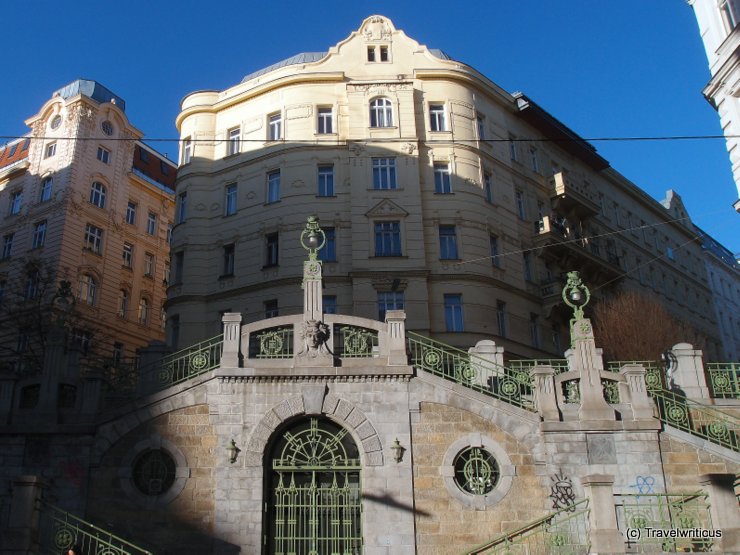
Architect Max Hegele built the Fillgraderstiege in 1905 – 1907. The outdoor staircase connects the Fillgradergasse with the Theobaldgasse in Vienna’s 6th district of Mariahilf. Architecturally, it is considered Viennese Art Nouveau. [German]
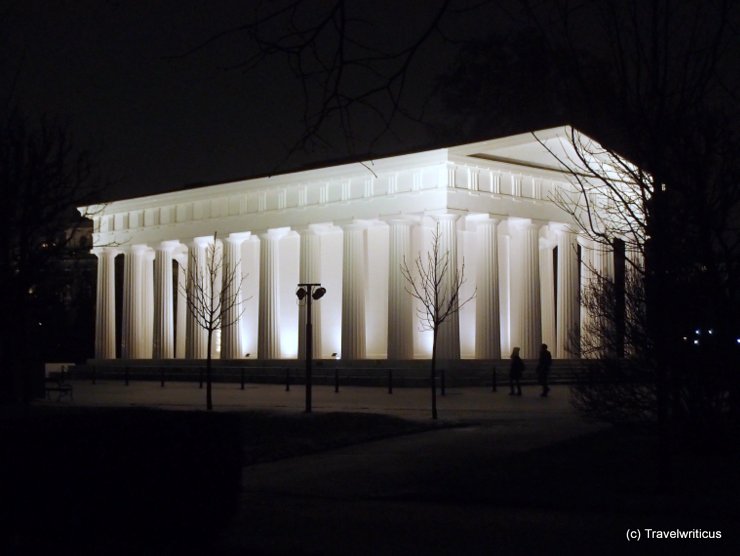
It is not visible from the Wiener Ringstraße. Only those who enter the public park named Volksgarten suddenly find themselves facing a piece of Greek antiquity. Of course, it isn’t ancient. The Theseus Temple is a classicistic building from the years 1819/23. [German]
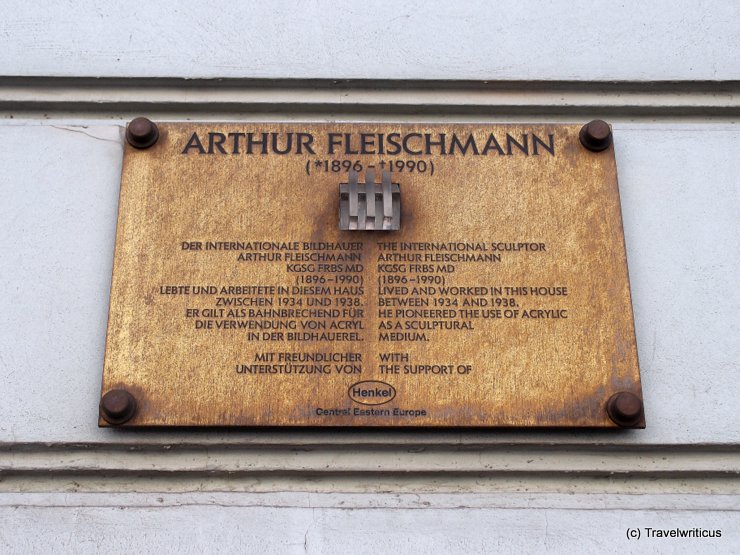
This memorial plaque on the Favoritenstraße 12 in Vienna reminds passers-by of the Slovakian-born sculptor Arthur Fleischmann. The design is pretty clever. A piece of acrylic refers to the fact that the artist used this material in his works many times. [German]
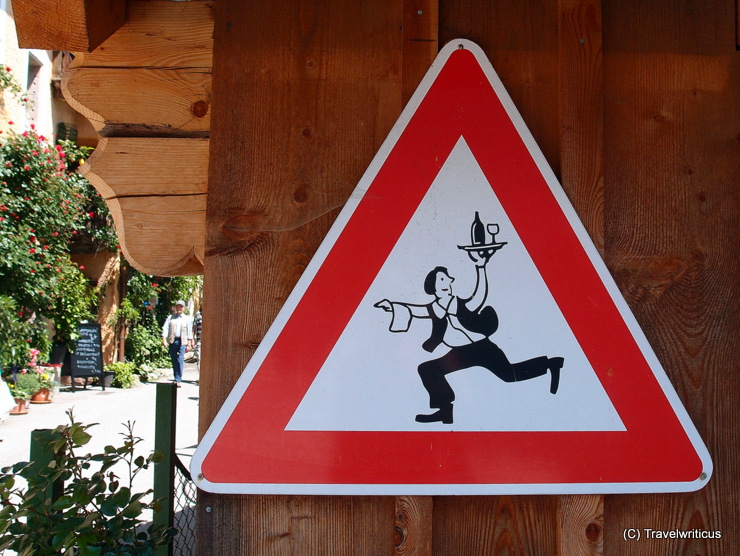
Beware of the dashing garçon! I saw this – probably unofficial – traffic sign in Hallstatt next to the famous Hallstatt Lake. It makes people aware of waitstaff crossing the street. A local restaurant and its open-air seating area occupy different sides of the lane.
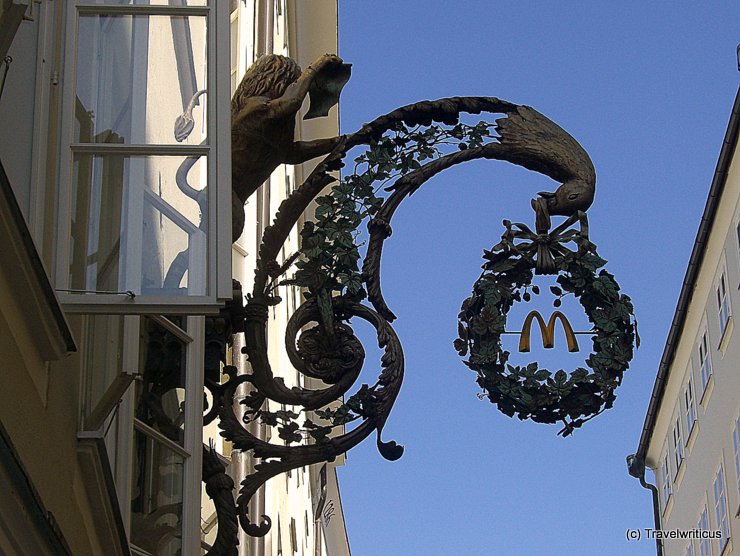
The Getreidegasse is the most famous lane of Salzburg. The alley is known for a plethora of wrought iron guild signs, worth a look. Even an American fast-food chain uses a classic house sign above its entrance. [German]
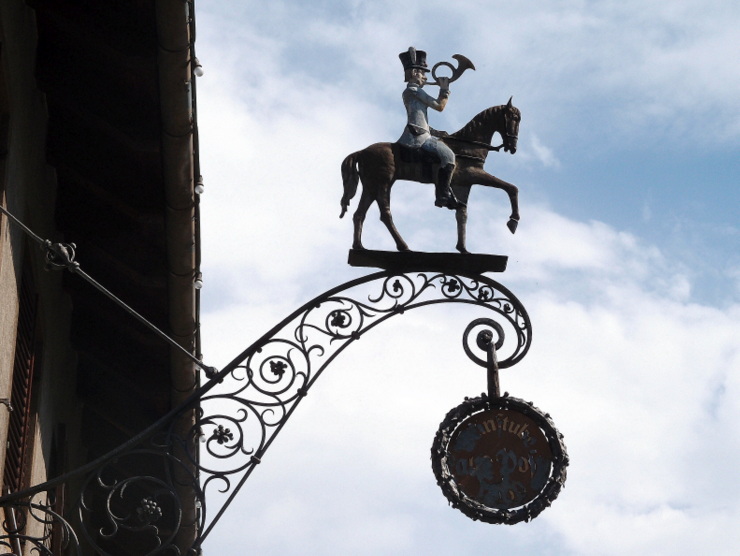
“Trara, die Post ist da!” This line of a German children’s song came to my mind when I saw this inn sign at the “Alte Post” in Dornbirn. The sign showed a postilion. The depiction probably referred to an earlier use of the building as a coaching inn.
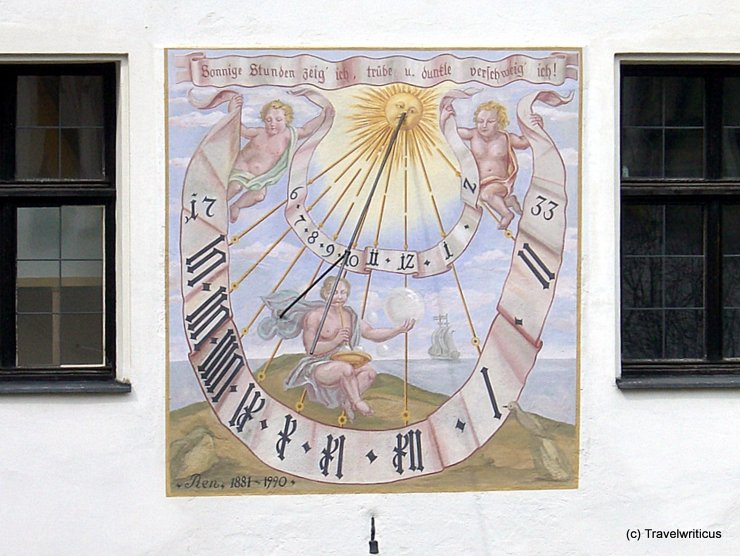
This pic portrays a sundial in Kufstein, a city in the Austrian state of Tyrol. It saw its completion in 1733, followed by renovations in 1881 and 1990. I am surprised that this sundial in the Austrian mountains depicts a big sailing ship in the background. [German]
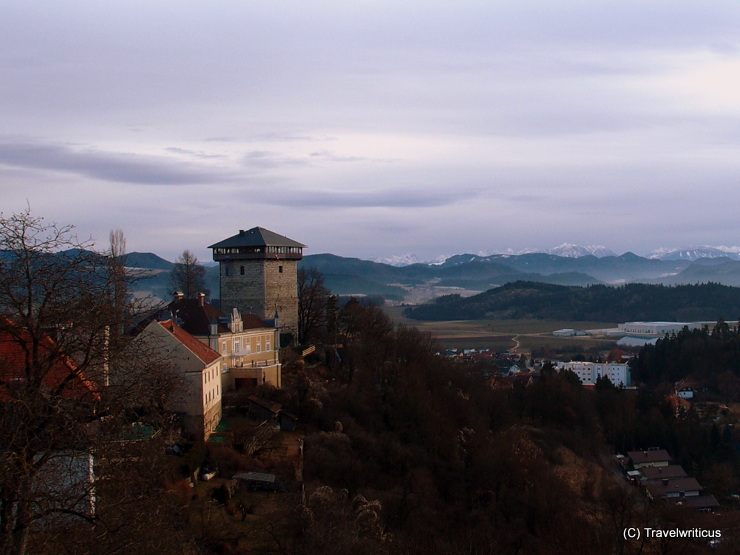
Althofen is considered one of the oldest still inhabited mountain settlements in Austria. Besides that, there are still remains from the former town fortification. For example, the Annenturm. This tower saw its completion in 1307.

You find this sundial in a courtyard of St. Peter’s Archabbey (Erzabtei St. Peter) in Salzburg. The two crossed keys represent the abbey’s coat of arms. The aged man is Saint Benedict. With the rule book and a raven, you see two attributes of him. [German]
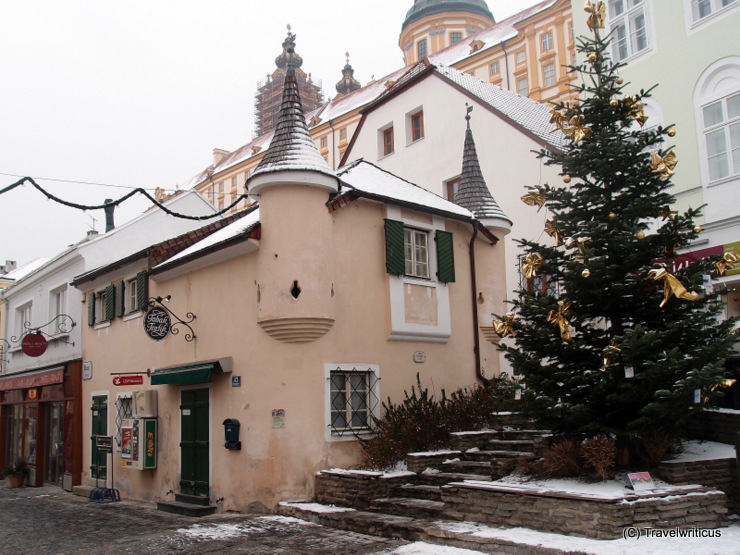
This romantic building with its dinky corner oriels is generally known as “Alter Brotladen” (Former Bread Shop). Three different bakers in Melk used it as a shared bread store. Some sources say it served as a Salzstadel (salt storehouse) before.